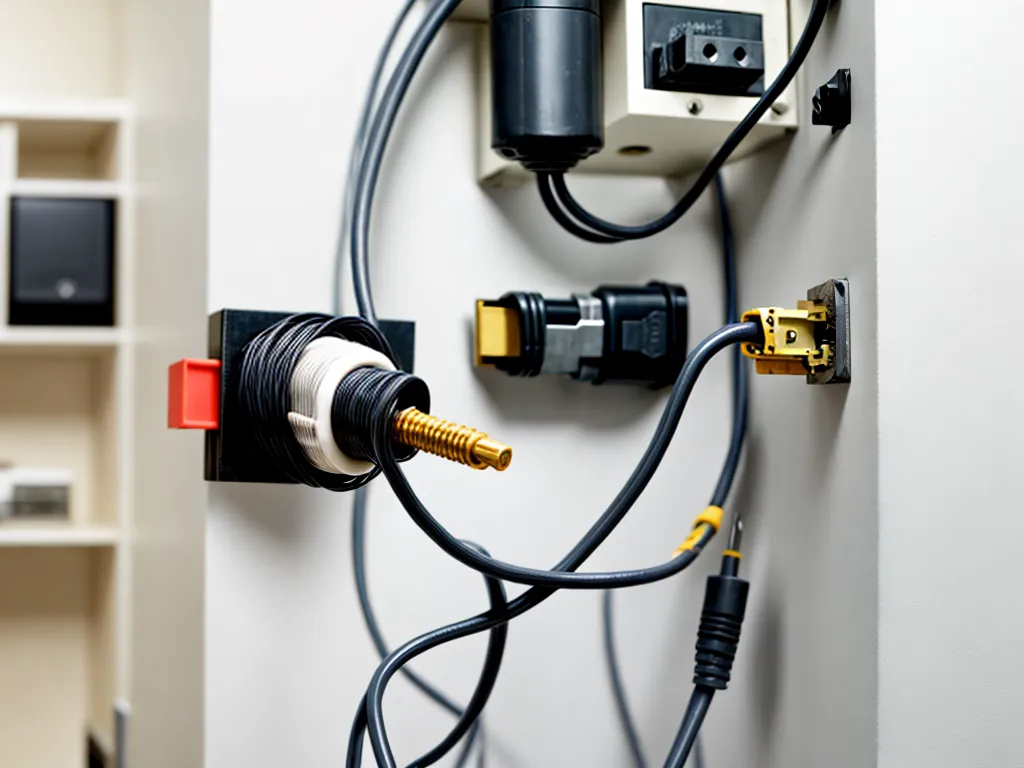
How to Wire Your Home With Coaxial Cable
Introduction
Wiring your home with coaxial cable allows you to set up a robust network for services like cable TV, satellite TV, and high-speed internet. Coaxial cable is a great choice for whole-home distribution of these services because it can transmit signals over long distances without degradation. In this guide, I will walk through the full process of wiring a home with coax step-by-step.
Planning Your Coax Network
The first step is planning out your coax network. Here are some key steps in the planning process:
Determine Where You Need Connections
Make a list of all the rooms and locations where you need a coax connection. This may include places like:
- Living room
- Bedrooms
- Home office
- Media room
- Den/family room
Consider anywhere you have (or plan to have) a TV, computer, or other device needing a coax connection.
Choose a Central Distribution Point
Decide on a central point in the home to connect all of your coax runs back to. This will be the hub where your cable/satellite feed comes in and gets distributed out to the rest of the home. A structured media panel, utility closet, or basement are common choices.
Map Out Cable Runs
Map out the path you'll need to take to run coax from your central point to each desired connection location. Make this as efficient as possible to avoid excessively long cable runs. Consider how you'll get the cables between floors if needed.
Select Coax Cable Type
There are two main types of coax to choose from:
-
RG6 - This is a thick, high-quality cable designed for long cable runs. It offers better shielding and less signal degradation. RG6 is the recommended choice for most homes.
-
RG59 - This is a thinner, more flexible cable. It works for shorter runs but has more signal loss over distance.
In most cases, RG6 is the way to go for whole home wiring.
Running Coax Cables
Once you've mapped out your coax network, it's time to run the cables through the home:
Cables Through Walls & Ceilings
Ideally, you'll route coax cables through walls and ceilings to keep them hidden. This may involve drilling holes through wall studs, running cables through crawlspaces or attics, and fishing cables down from above. Take care not to kink or excessively bend the coaxial cable.
Surface-Mounted Cables
If running cables through walls isn't possible, you can route them along baseboards secured by cable clips. This keeps the cables out of sight but reachable in case they ever need replacement.
Labeling Cables
As you run each cable, clearly label both ends with source and destination location. This will keep things organized as your number of cables grows.
Avoid Burying Cables
Avoid burying coax cables in-wall since this makes them inaccessible. Running through attics, crawlspaces, and basements keeps them within reach.
Connecting Coax Cables
After running your coax cables, the next step is connecting everything:
Cable Connectors
Attach F-type coax connectors to the ends of any cable runs that don't have factory-attached connectors. Make sure connectors are securely crimped or compression-fitted.
Central Distribution Point
Connect all of your coax runs to a splitter or distribution amplifier at your central distribution point. This splits your incoming service signal out to each cable.
Outlets & Devices
Attach your coax cables to outlets, wall plates, or directly to devices like TVs and modems. Use coax-compatible connectors like F-connectors.
Cable Modem
Connect your incoming internet/cable service line to your cable modem. Connect the modem to a coax outlet to distribute internet through the coax wiring.
Testing Connections
Test each connection by checking for signal transmission between outlets. Verify internet connectivity and TV/satellite reception at each location to confirm proper connectivity.
Troubleshooting Coax Networks
If you encounter issues with your coax network, here are some tips for troubleshooting:
-
Check connections for damage, improperly fitted connectors, etc. Reconnect any loose fittings.
-
Test cable runs for continuity using a coax toner/probe kit to confirm cables are connected correctly.
-
Try disconnecting splitters to isolate the problem to a specific run or location.
-
Inspect cables for kinks or other physical damage that could impede signal transmission.
-
Use a coax cable signal meter to check for adequate signal strength at each connected outlet.
-
If necessary, rerun any cables that appear to be faulty.
Following this full process will allow you to successfully install a high-quality coax network in your home tailored to your specific needs. With coax cabling in place, you'll be ready to enjoy the benefits of fast, reliable cable TV, satellite, and internet connectivity throughout your home.